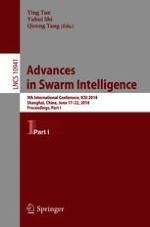The two-volume set of LNCS 10941 and 10942 constitutes the proceedings of the 9th International Conference on Advances in Swarm Intelligence, ICSI 2018, held in Shanghai, China, in June 2018. The total of 113 papers presented in these volumes was carefully reviewed and selected from 197 submissions. The papers were organized in topical sections as follows: theories and models of swarm intelligence; ant colony optimization; particle swarm optimization; artificial bee colony algorithms; genetic algorithms; differential evolution; fireworks algorithms; bacterial foraging optimization; artificial immune system; hydrologic cycle optimization; other swarm-based optimization algorithms; hybrid optimization algorithms; multi-objective optimization; large-scale global optimization; multi-agent systems; swarm robotics; fuzzy logic approaches; planning and routing problems; recommendation in social media; prediction, classification; finding patterns; image enhancement; deep learning.
